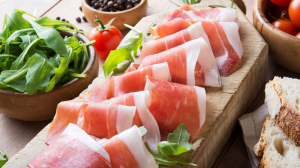


China has established a solid but rather complex regulatory system for food additives. This system might prove difficult to navigate for EU food producers. Many have reached out to the EU SME Centre with detailed questions on the permitted usage and scope of food additives. For this reason, we are publishing guidelines to clarify these issues and to provide practical guidance to European SMEs.
Specifically, these guidelines cover the principles for the application of food additives in mainland China, as regulated by GB 2760-2014 National Food Safety Standard for Uses of Food Additives and its appendixes:
Please note that these guidelines are about the current version of GB 2760-2014 in force. However, this standard is currently under revision. Chapter 5 introduces the expected changes based on the preliminary drafts of the revised standard issued in 2021 and 2022. In particular, we look into the application of nutrition fortification substances and the structural changes applied to the tables included in the standard’s appendixes.
The last chapter provides a list of frequently asked questions that the EU SME Centre has received in the past year from European SMEs. These mostly involve the applicability of GACC’s 2021 Decree 248 to producers of food additives or natural ingredients exported to China. This chapter also introduces useful tools for EU SMEs to easily identify permitted food additives and relevant food safety standards. For more information on Decree 248, you can download our guidelines on how to complete the mandatory GACC registration.
Note: the screenshots displaying tables and examples are mostly from unofficial English translations of Chinese standards by the Foreign Agricultural Service of the US Department of Agriculture (USDA). You can access the full translations from the relevant links in the footnotes.
Executive summary
1. Legal framework
2. Definitions, principles and provisions for use
2.1. Food additives usage provisions (GB 2760 Appendix A)
2.2. Flavouring substances (GB 2760 Appendix B)
2.3. Food processing aids (GB 2760 Appendix C)
3. New food additives and new raw materials
4. Labelling requirements
5. New changes ahead: revision of GB 2760
6. Q&A and tips